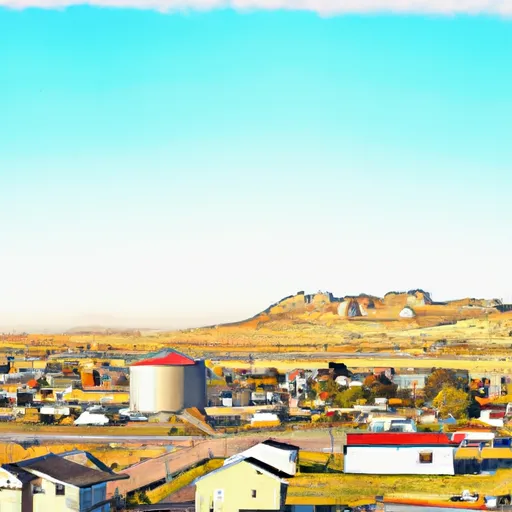-
 Snoflo Premium
Snoflo Premium
Get unlimited access to all our content
With no Ad interruptions! - Start Your Free Trial Login with existing account
Shell
Eden Index
Climate
5.9
•
Recreation
5.9
•
Community
•
Safeguard
4.4/10

Shell, Wyoming is a charming small town located in the northwestern part of the state. Known for its breathtaking natural beauty, Shell experiences a continental climate with warm summers and cold winters. Average temperatures range from 20°F (-6°C) in January to 85°F (29°C) in July, making it an ideal destination for outdoor enthusiasts throughout the year.
Hydrologically, Shell is home to numerous water bodies, including the nearby Shell Creek. This creek is popular among anglers, offering excellent fishing opportunities for trout. Additionally, nearby Big Horn River is renowned for its world-class fly fishing.
Outdoor recreation is abundant in Shell, catering to a variety of interests. The town is surrounded by vast wilderness areas and national forests, offering opportunities for hiking, camping, and wildlife viewing. The spectacular Shell Falls, located in the Shell Falls Interpretive Site, is a must-visit attraction for nature lovers. The nearby Big Horn Mountains offer opportunities for horseback riding, mountain biking, and rock climbing. Wintertime brings opportunities for skiing, snowboarding, and snowmobiling.
In summary, Shell, Wyoming offers a picturesque setting with a continental climate, abundant hydrology constituents, and a wealth of outdoor recreation opportunities, making it an ideal destination for nature enthusiasts and adventurers.
What is the Eden Index?
The Snoflo Eden Index serves as a comprehensive rating system for regions, evaluating their desirability through a holistic assessment of climate health, outdoor recreation opportunities, and natural disaster risk, acknowledging the profound impact of these factors on livability and well-being.
Climate Health Indicator (CHI): 5.9
Shell receives approximately
709mm of rain per year,
with humidity levels near 50%
and air temperatures averaging around
2°C.
Shell has a plant hardyness factor of
5, meaning
plants and agriculture in this region thrive during a short period during spring and early summer. Most
plants will die off during the colder winter months.
By considering the ideal temperature range, reliable water supplies, clean air, and stable seasonal rain or snowpacks, the Climate Health Indicator (CHI) underscores the significance of a healthy climate as the foundation for quality living.
A healthy climate is paramount for ensuring a high quality of life and livability in a region, fostering both physical well-being and environmental harmony. This can be characterized by ideal temperatures, reliable access to water supplies, clean air, and consistent seasonal rain or snowpacks.
Weather Forecast
Streamflow Conditions
Big Horn
Area Rivers
Big Horn
Snowpack Depths
Big Horn
Reservoir Storage Capacity
Big Horn
Groundwater Levels
Recreational Opportunity Index (ROI): 5.9
The Recreational Opportunity Index (ROI) recognizes the value of outdoor recreational options, such as parks, hiking trails, camping sites, and fishing spots, while acknowledging that climate plays a pivotal role in ensuring the comfort and consistency of these experiences.
Access to outdoor recreational opportunities, encompassing activities such as parks, hiking, camping, and fishing, is crucial for overall well-being, and the climate plays a pivotal role in enabling and enhancing these experiences, ensuring that individuals can engage in nature-based activities comfortably and consistently.
Camping Areas
| Campground | Campsites | Reservations | Toilets | Showers | Elevation |
|---|---|---|---|---|---|
| Cabin Creek Meadows | 26 | 7,637 ft | |||
| North Tongue | 12 | 7,840 ft | |||
| Owen Creek | 8 | 8,477 ft | |||
| Porcupine | 16 | 8,822 ft | |||
| Ranger Creek - Paintrock | 17 | 7,672 ft | |||
| Prune Creek | 21 | 7,687 ft | |||
| Medicine Lodge Archaeological Site | 25 | 4,798 ft | |||
| Shell Creek | 15 | 7,589 ft | |||
| Bald Mountain | 15 | 9,088 ft |
Catastrophe Safeguard Index (CSI):
The Catastrophe Safeguard Index (CSI) recognizes that natural disaster risk, encompassing floods, fires, hurricanes, and tornadoes, can drastically affect safety and the overall appeal of an area.
The level of natural disaster risk in a region significantly affects safety and the overall livability, with climate change amplifying these risks by potentially increasing the frequency and intensity of events like floods, fires, hurricanes, and tornadoes, thereby posing substantial challenges to community resilience and well-being.
Community Resilience Indicator (CRI):
The Community Resilience Indicator (CRI) recognizes that education, healthcare, and socioeconomics are crucial to the well-being of a region. The CRI acknowledges the profound impact of these elements on residents' overall quality of life. By evaluating educational resources, healthcare accessibility, and economic inclusivity, the index captures the essential aspects that contribute to a thriving community, fostering resident satisfaction, equity, and social cohesion.

